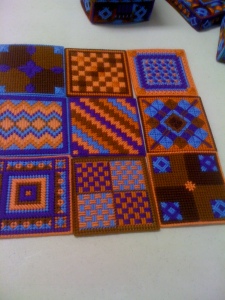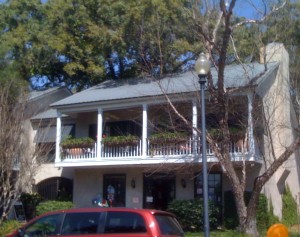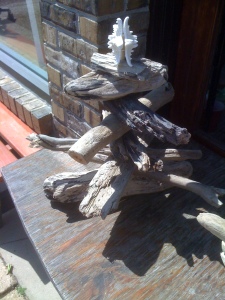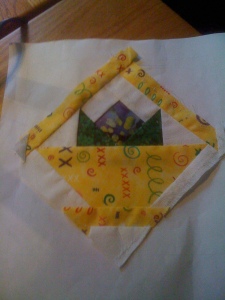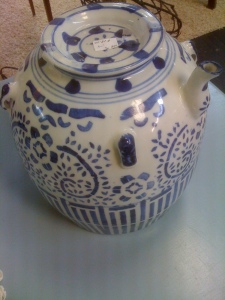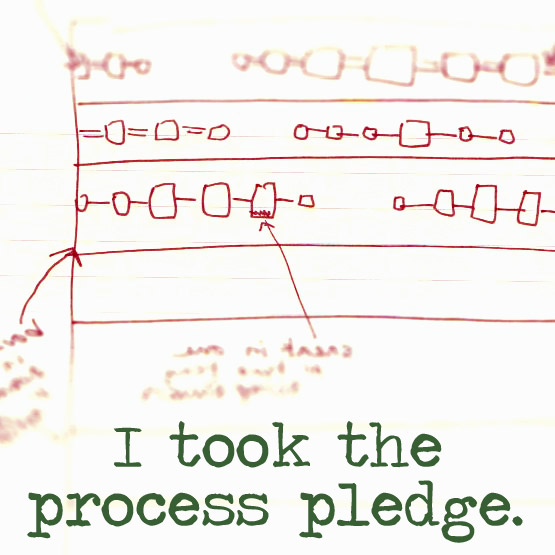
Paper Pieced Basket Blocks
I showed you these blocks the other day but I thought some of you might like to see how a “paper-pieced” block goes together. This particular 7″ block is a design by Carol Doak. Carol has been designing paper-pieced projects for many years and has a number of books available with designs and instructions. She has a website store where she sells her products and also posts free paper-piecing designs on a fairly regular basis. Carol is a New Englander, from New Hampshire as well as the motivating force behind a Yahoo! group I belong to. It’s a free site and you can join if you like paper-piecing. Every so often there will be a challenge or a swap with the main rule that you must use a Carol Doak design in the challenge or swap.
This particular basket block swap told us exactly what block to use and also that we had to use black on white or white on black in specific locations as well as white in specific locations. This assures that wherever your four blocks come from they will “go together” due to the white/black fabrics.
So, here we go. This really isn’t a tutorial, more just a photo step by step of how my basket block went together. One must follow the numbers on a piece of paper.

The foundation of the paper pieced basket block
The numbering on the block is done to assure that as each piece of fabric is placed the raw edges will be covered and the design will emerge.
You can see #1 is that on-point diamond in the middle upper quadrant. It represents the flower in the basket.

My flower fabric
This #1 fabric gets held wrong side of fabric against the back of the paper, covering the area marked with the diamond. The #2 fabric is held with the right side of fabric against the right side of the diamond so that the raw edge is against the edge of #2 on the paper design.

Fabric #2 held right sides together against Fabric #1
These two pieces of fabric are on the BACK SIDE of the printed design so essentially you are sewing upside down and backward. You do your stitching along the line joining #1 and #2 on the front printed side of the paper and you stitch right through the paper following the line. You extend your stitches a few stitches on either side of the line.
 Fabric #1 is now joined with Fabric #2 along the joint seam and then pressed open. These fabric pieces are slightly larger than the actual shape on the paper so to be sure to cover the shape. Trimming is done as each seam is pressed open so that you have 1/4″ or less of fabric behind the pieces.
Fabric #1 is now joined with Fabric #2 along the joint seam and then pressed open. These fabric pieces are slightly larger than the actual shape on the paper so to be sure to cover the shape. Trimming is done as each seam is pressed open so that you have 1/4″ or less of fabric behind the pieces.

Fabric #2 added (white)
I think you can see the white patterned fabric #3 has been added to fabrics #1 and #2 along the joint line on the paper pattern in the same reverse way as the others. Another raw edge of fabric #1 (and also #2) has been covered.

Adding fabric #4, a leaf
As you can see, we are working around the very first fabric (yellow), enclosing it with other fabrics. Fabric #4 is one of the leaves.

Fabric #5, another leaf
Fabric #1, yellow flower, is now enclosed on all four sides-no raw edges show anynmore. The second leaf, Fabric #5 has been added.
Now I’ll confess right here that it isn’t always so easy to place these fabrics. Working on the reverse side of the fabric you can can confused about the direction the fabric will be facing when pressed flat. This is like working upside down and wrong side out. I usually use a piece of fabric a little larger than the actual size needed and trim after I have it in place. I hold the paper up to an open window or light and I can see, fairly well, through the paper to see that the fabric is going to cover the size of the space needed and usually if I have it positioned right.
Sometimes it doesn’t come out positioned quite right so you take out the seam and place it again. These are all small pieces so there are usually only a very few stitches to take out.
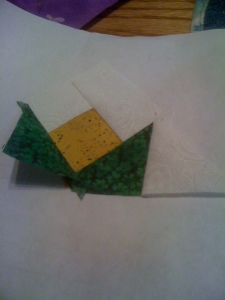
White background piece #6
Here as I add #6 we are covering a raw edge of the leaf. It’s almost liking working around the center as we cover each edge and add the adjoining fabric.
 Fabric #7 enclosed the final upper edge of the flower/leaf area. Each piece as it’s added it opened and pressed before adding the next piece. It’s vital to know that the piece you just stitched down is covering its alloted area.
Fabric #7 enclosed the final upper edge of the flower/leaf area. Each piece as it’s added it opened and pressed before adding the next piece. It’s vital to know that the piece you just stitched down is covering its alloted area.

Ah, the body of the basket
Now we’re talking! We’re adding the body of the basket, #8, to the flower portion. This hasn’t been pressed down yet as you can see by the curling edge.

Fabric #9
Fabric #8 was trimmed to fit its space and fabric #9 is added to give shape to the basket edge.
 Fabric #10 defines the other side of the basket, on the left.
Fabric #10 defines the other side of the basket, on the left.

Fabric #11
Fabric #11 has been added to give the basket a base. Here it hasn’t been pressed and the trimming doesn’t get done until # 12 is stitched to it.

More fabric to distinguish the base from the background
Fabric #12 is added below the base. You can see on the right side of the fabric #12 where the excess base fabric extends down. Now that #12 has been added, I can flip that white back over and trim the two seams together about a scant 1/4″.

Step #13
Next we’re moving up to the top and adding a basket handle to the piece. Fabric #13 is the right handle.

Another handle
Fabric #14 is the second handle. See how precisely the points of the leaves are shown, and the points on the edge of the basket. This isn’t a matter of expertise on the part of the stitcher; it’s the outcome of stitching on the lines designated. Even a beginner will have those same precise points.

Tiny pieces can make a big difference
Can you find fabric #15? I gave you a hint. It’s a tiny piece. Okay, I’ll tell you. It’s on the left side at the edge where the basket meets the handle, a tiny triangle. Sometimes these tiny pieces are what it takes to give an accurate shape to your subject.

Another tiny piece
There is an identical little triangle on the right side of the basket handle, #16. #16 hasn’t been trimmed yet so it looks larger but it’s not, or it won’t be once we add the borders.

First border section
We’re close to the finish line now. We’re adding fabric #17, the first border section which was designated to be white on black or black on white fabric. Here I haven’t press it open yet so you can see the paper peeking out.
 There it is, #17 pressed open.
There it is, #17 pressed open.
I’ll tell you a secret right now. When I was making basket #3, I was sailing along, feeling confident. I had made two others, right? I knew how it went together, right? Wrong! I got all the way to the end, to the very last border section when I looked at the front and saw a hole–a place where raw edges were still visible–!!! I had skipped one number so I had to rip out all the steps between the one I missed and the one I was currently on, the last step. Then added the missing piece and stitched the others all back together. Yes, it took more time but it wasn’t the end of the world. Everything looked precisely as it should at the end of the block and you never would have known if I hadn’t told you!! We all can make mistakes, and we all can correct them. We should never let the possibility of an error keep us from trying something.

Next....
And so it goes as we finish the block on the other two sides. Why I didn’t take a shot of these last two steps, I have no idea! Maybe it was getting late and my brain was getting fuzzy.
 Completed block…19 little pieces of fabric to make a 7″ block but it has precise points I wouldn’t get any other way, and it’s so much fun to build the block and see the design emerge.
Completed block…19 little pieces of fabric to make a 7″ block but it has precise points I wouldn’t get any other way, and it’s so much fun to build the block and see the design emerge.
There are paper piecing designs for beginners and paper piecing designs for advanced. Pick your poison!
Update
Quilter’s Hoodie No More
Yes, that’s right. I can’t call my project a Quilter’s Hoodie any more. I decided not to add a hoodie, but went for a collar instead so I can show off the paper piecing I did across the yoke section. Yesterday, I was able to finish the quilting on the individual pieces, thanks to the co-operation of Bernie (my Bernina). I thought if I gave her a nickname, she might cooperate better. I guess it worked.
I washed the fabric sections at Pat’s while the tractor guys and their wives were having a lunch time cook-out which saved me from an hour at the laundromat. Most sections crinkled up just the way I wanted. The back didn’t. I think it’s because there were bigger spaces between the quilting on the back but that’s fine. No one can look at the front and the back at the same time, right?
During the night last night, I woke up thinking about my jacket and if it had shrunk too much, too little or just right. So, at 3 a.m. I was up pinning the pattern pieces to the laundered sections to assure myself it was all right and I could go back to sleep. Do you ever do things like that? I knew I would lay there and obsess about it until it was a decent hour to get up, or I could get up, check it out and go back to bed.
I went back to bed at 4 a.m. with the pieces all cut out and ready to stitch. I’m pleased with it so far. Quilter’s jacket, not quilter’s hoodie. My next one will be a hoodie for sure, and yes, even though it requires a great deal of work and time allotment, I will be making more.
That’s it for today, friends. I’m off to have a nice breakfast with DH and then probably some grocery shopping and back to work on my February swap project. That’s about the only thing I have left on my Priority List. My bucket list is in the background just waiting for me to start working on it. Maybe in March!
Hugs to all. Marsha







